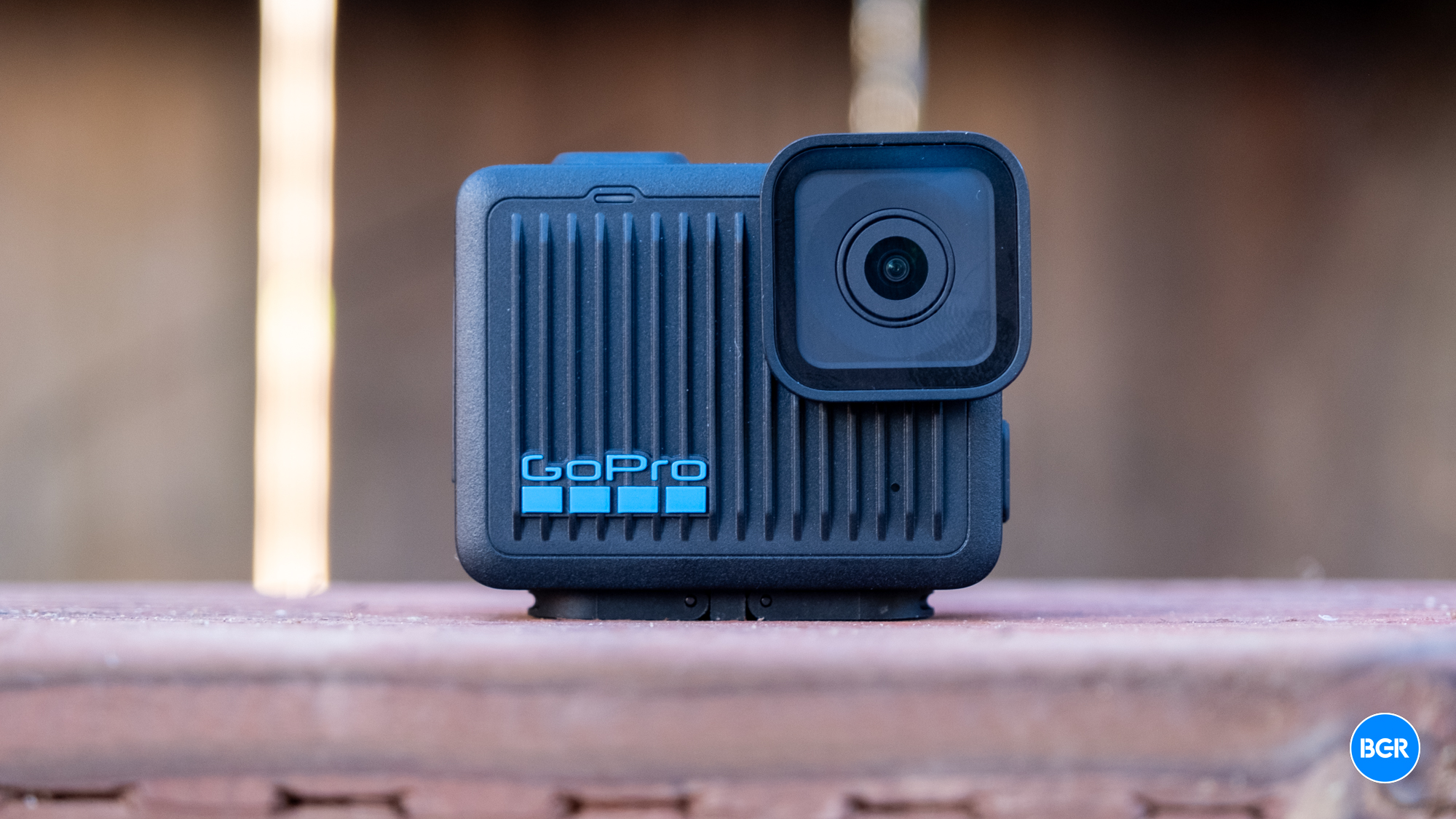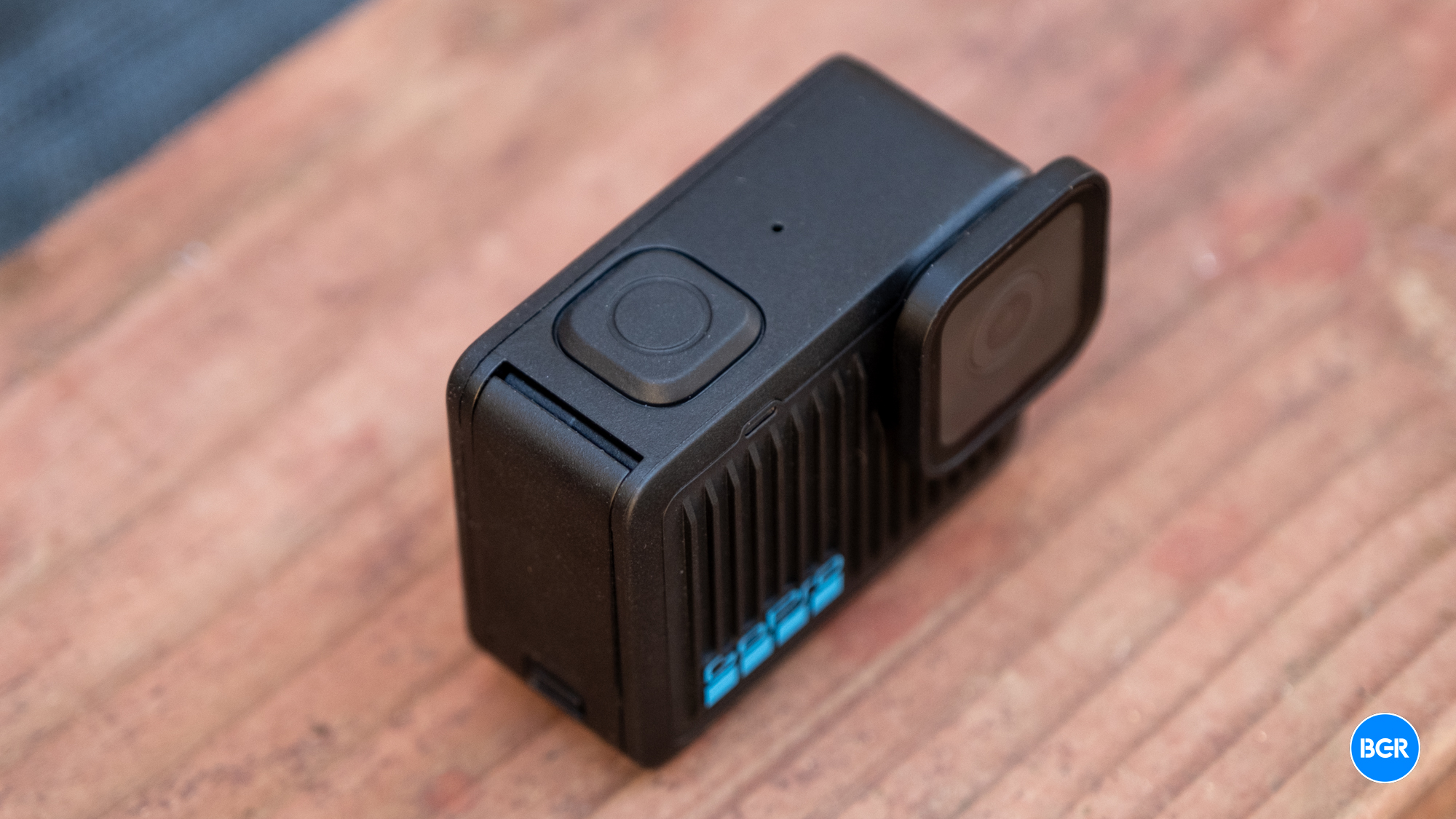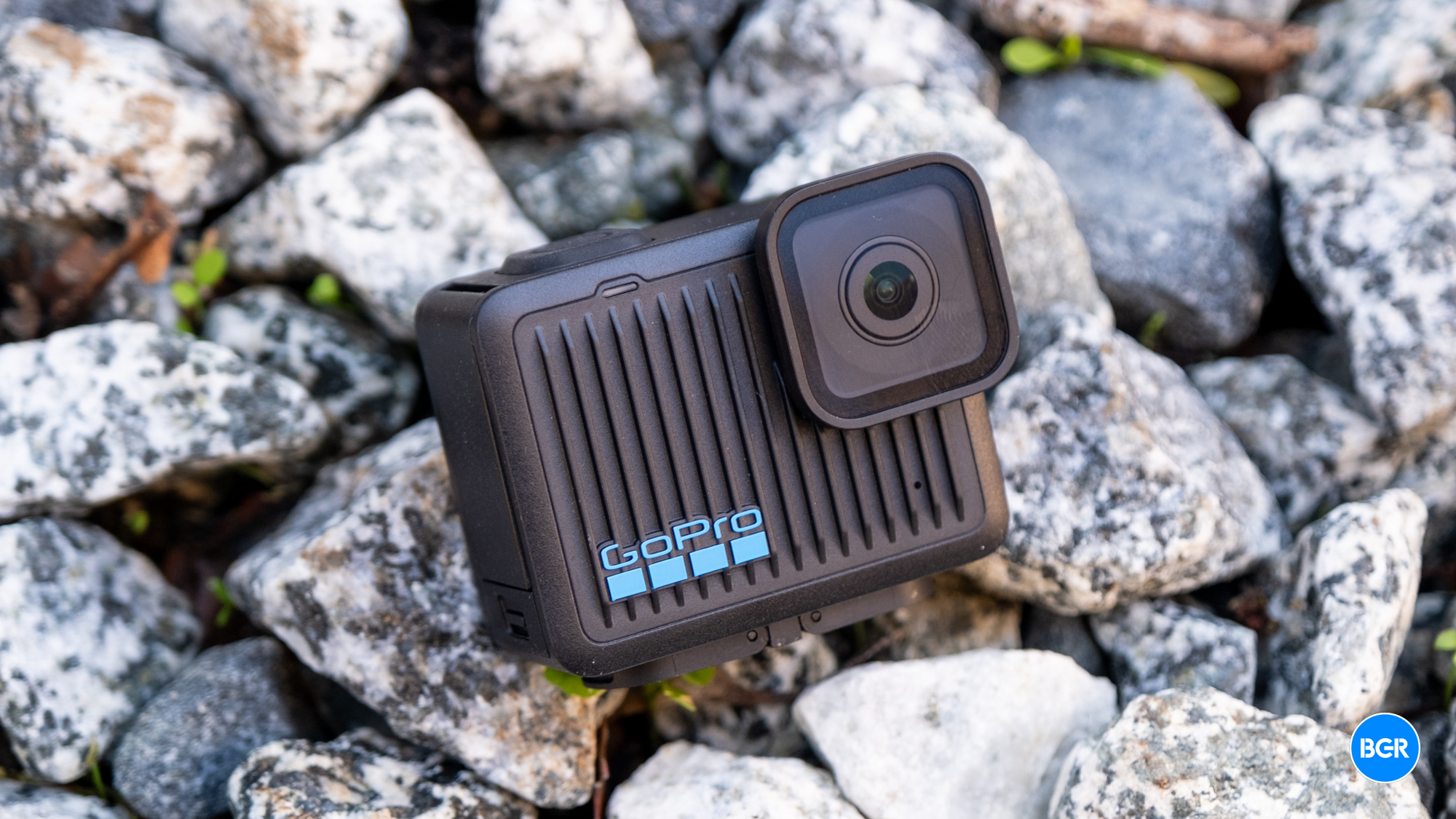The GoPro Hero offers a low price tag and compact build. Does it make too many compromises?
Pros
- Compact body
- Software is still easy to use
- App works well
- Inexpensive
Cons
- No 60fps at 4K
- No HDR
- Only one angle
| Buy From | List Price | Sale Price | |
|---|---|---|---|
| $199.99 | $199.99 | See It |
GoPro wants to bring action cams to a wider array of customers. While its main line of action cameras has been getting better and better, they’re still a little pricey for some. That, however, is where the new GoPro Hero comes in, offering a compact and more affordable option for those who want an action cam but at a lower price.
Of course, to hit that lower price point, GoPro has to make some compromises. There are some obvious ones, like the fact that the GoPro Hero doesn’t have a front display. Then there are some not-so-obvious ones, like the fact that it has a lower quality camera than its top-of-the-line GoPro Hero13 Black. But it also has a very low price point. At $180, is the GoPro Hero worth buying? Or should you go for an alternative from another company or just keep saving? I’ve been using GoPro’s budget action camera to find out.
GoPro Hero specs
| Dimensions | 56.6 x 47.7 x 29.4mm |
| Weight | 3.0oz |
| Water-resistance | 16ft / 5m (without waterproof case) |
| Rear display | 2.5 inches, 400 x 712 pixels |
| Internal storage | None |
| Camera sensor | 1/2.8-inch CMOS, 12MP |
| Maximum video resolution | 3840 × 2880 at 30fps, 2.7K at 60fps |
| Maximum video bitrate | 50 Mbps |
| Price | $179.99 |
A compact yet strong build
While the mainline GoPro Hero cameras have been slowly but surely iterating on design, they largely keep the same overall look year after year. The GoPro Hero, on the other hand, offers a bit of a different build that’s aimed at making it more compact. Indeed, it is a fair bit smaller than the GoPro Hero13 Black, which will be good news for many users.
It does still look like a GoPro camera, though. It has the same matte black plastic build and feels strong and sturdy in the hand. On the front, you’ll find a similar-looking oversized camera module. However, as mentioned, there’s no front-facing screen.

The way you’ll interact with the camera is through the display on the back of it. The screen is 1.76 inches, which is relatively small, but I found it was perfectly fine to get an overview of what the camera can see. It’s also not the highest quality screen out there, being an LCD rather than an OLED, but it does the job just fine.
There are also two large rubber buttons, one on the top and one on the left side when you’re looking at the display. The button on the left allows you to turn the camera on and off and quickly switch between shooting modes, while the button on the top starts and stops image capture.
Thankfully, the camera still has GoPro’s fold-out mounts on the bottom, ensuring that you can use it with any accessories you already own. Accessories for the GoPro Hero include things like selfie sticks, bike mounts, helmet mounts, and so on, and they’ll all work with the GoPro Hero.

On the right side of the device (when looking at the display) is a small door that pops open when you unlatch it. Typically, on a GoPro camera, this is where you would find a removable battery, but there’s no removable battery on the Hero. Instead, this door hides the microSD card slot and USB-C port for charging — but that’s it. You’ll have to charge up the device when it runs out of juice, instead of keeping multiple batteries to use with it.
Simple software
While the screen on the GoPro Hero is smaller than other GoPro cameras, the overall software experience on it is similar. That’s a good thing — the interface is pretty easy to navigate, and makes switching between shooting modes and changing settings a breeze.

The app is pretty easy to use too. From the Quik app, you can see and download any footage, and control basic recording features, which is helpful.
The app gets more features if you use the GoPro Premium subscription, which costs $24.99 for the first year, then $49.99 per year after that. It’ll get you cloud storage, as well as a discount on GoPro cameras, amongst other features. With the plan, the camera will also automatically upload footage to your cloud plan when it’s plugged in, and you can even have it wipe the memory card when it’s done. Handy!

I did find the setup process buggy though. I had to restart setup multiple times, and each time, the camera failed to download and install the update when connected to my phone. It was only after I manually updated the software on my computer that I was able to properly link the camera to my phone.
Decent, compromised, video quality
The video quality on offer by the GoPro Hero isn’t as good as what you’ll get on GoPro’s higher-end cameras. It has a 4K resolution (instead of 5.3K) and 30 frames per second in 4K, or 60fps in 2.7K. Essentially, it’s lower-resolution and captures at a lower framerate. It also can’t record 10-bit video, so you won’t get HDR here. That means that highlights can look a little blown out, and you’ll lose detail in shadows.

Those things don’t mean that the camera captures poor video though — just that it’s less versatile. On the contrary, the footage on offer by the GoPro Hero is pretty good, for a camera in this price range. Colors are relatively vibrant, and images look decently natural. Low-light recording isn’t great though — and a midrange smartphone will capture better low-light video, though likely in a less durable body.
The lens is a little limiting, though. The camera only offers one lens mode, which is a 15mm equivalent, with distortion on the edges. It gives video an ultra-wide look, which might be fine, but again, lacks versatility.
Conclusions
The GoPro Hero isn’t a bad camera, but GoPro has made some clear trade-offs to hit the lower price point. I like the small body, and the software is still easy to navigate. And, video quality isn’t bad, in most situations. But I wish the camera was a little more versatile.
The competition
There isn’t a whole lot of competition at this price, at least if you buy something new. But, if you don’t mind a larger device, you might be better off looking for a used GoPro Hero11 Black, or something similar. The Hero11 Black offers a front display, support for higher-res and higher-framerate footage, and more.
Should I buy the GoPro Hero 4K?
Maybe, but only if a compact build is the most important factor for you.
